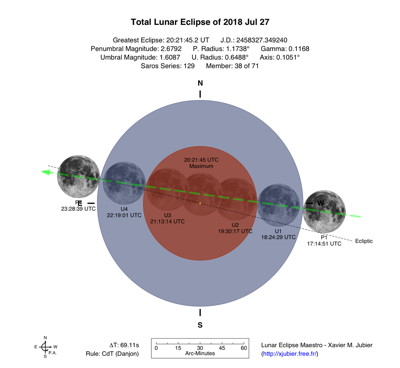|
Namibia will be the best location to observe this total lunar eclipse from as the chances of clear skies are excellent, followed by South Africa, Botswana, Australia and the Canary Islands as a close second choice. Weather in Europe and North Africa should also provide some good opportunities, nevertheless southern Africa provides the best balance. It’s worth to mention that this lunar eclipse will be the longest of the 21st century and that planet Mars will also be in opposition on July 27th and only about 7 degrees from the Moon during maximum eclipse that is just outside of the Earth’s penumbral cone. Because the sixth international Solar Eclipse Conference (SEC 2018) will be held in Tenerife, Canary Islands, Spain from July 27 to 28th, 2018 it means I will very likely observe the lunar eclipse from the slopes of the Teide volcano in Tenerife where the weather is usually good as well. is not held anymore in Tenerife, Canary Islands, Spain, but in Genk, Belgium, my viewing location will now be the Kalahari desert in South Africa where the sky is usually clear.
With my Lunar Eclipse Maestro software, you can know much more about each lunar eclipses and control your digital cameras to automate the photography part in order to fully enjoy the eclipse visually.
The next total lunar eclipse will occur on 2019 January 21st and my preferred viewing site will likely be in Chile to optimize the weather conditions.
Click on thumbnails for a larger version
|












